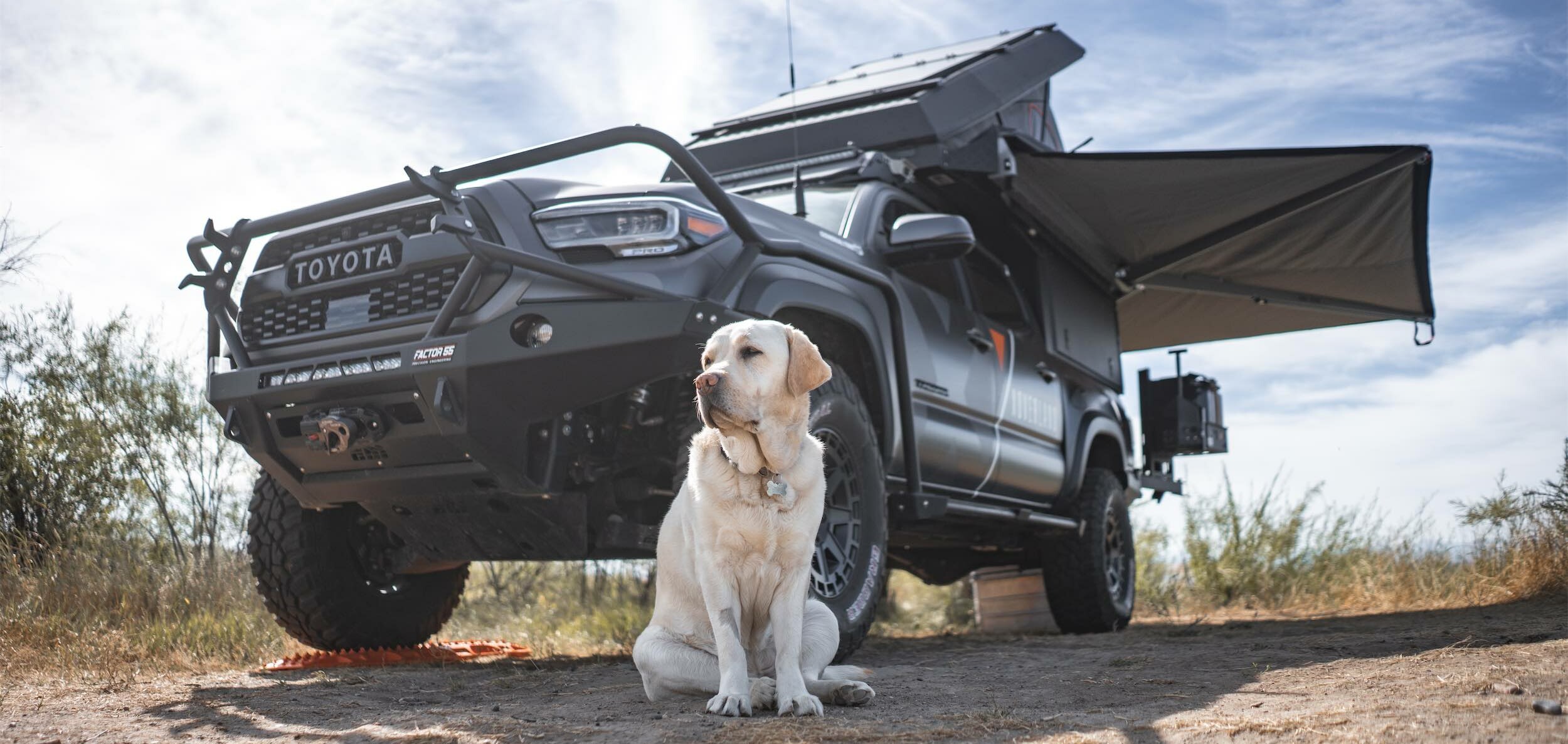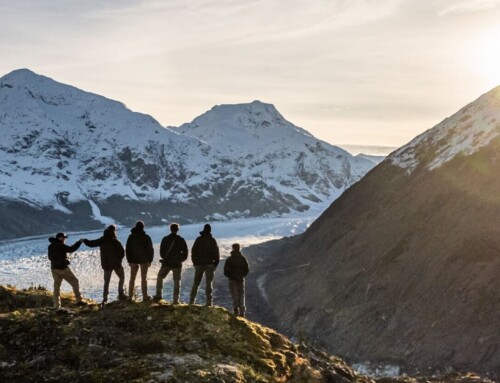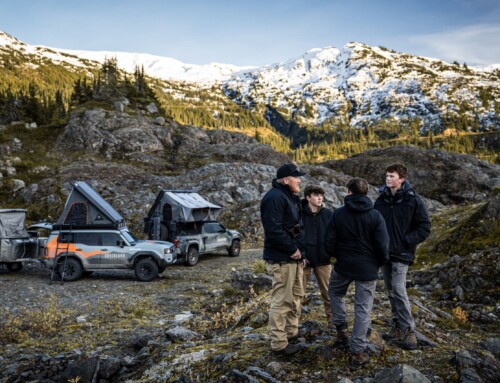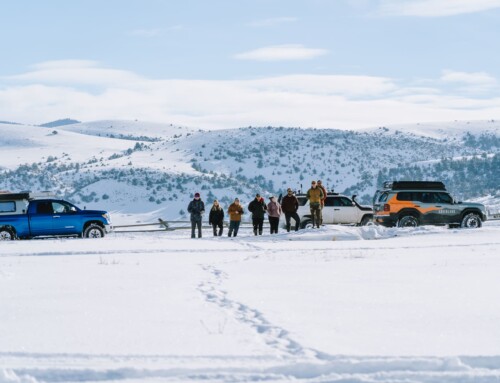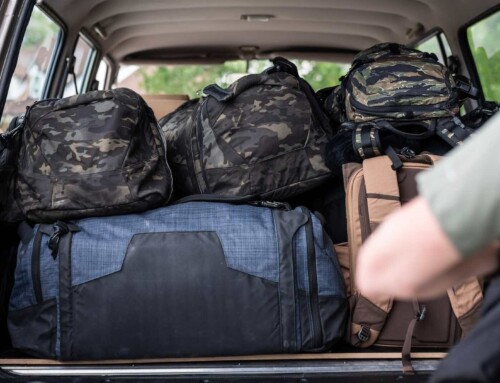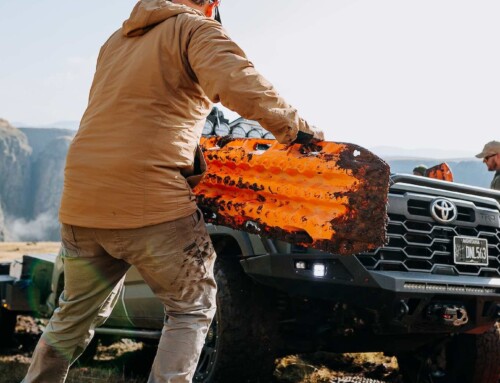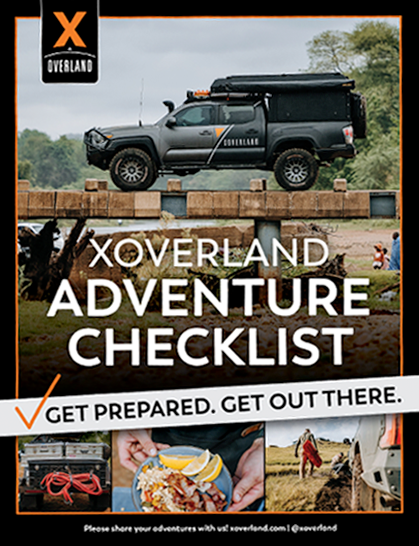No one wants to leave their beloved dog at home when heading out for an adventure. Just think of those sad, sad, puppy eyes staring at you while you close the door feeling guilty and wishing you could somehow have your canine buddy join you for the fun!
Dogs love going on an adventure, and we’re here to share some approaches for bringing Fido along the next time you head out!
Proper Mindset to Take Your Pooch Along for the Ride!
As in all things overlanding, a healthy mindset and attitude toward the adventure are key. This is especially true when it comes to taking along your dog.
It might help to think of taking a dog along on your adventure as being similar to taking along a child. Both children and dogs need their basic needs met in order to stay healthy and have fun.
As the “parent,” it’s also up to you to pay attention to the context of your trip so you can figure out if it will be a good fit for your dependent, and taking your dog or kiddo along for the ride means your needs don’t always come first.
Work on developing a mindset toward setting up your doggo for success, and the two of you will stay safe, have fun, and continue seeking more adventure together!
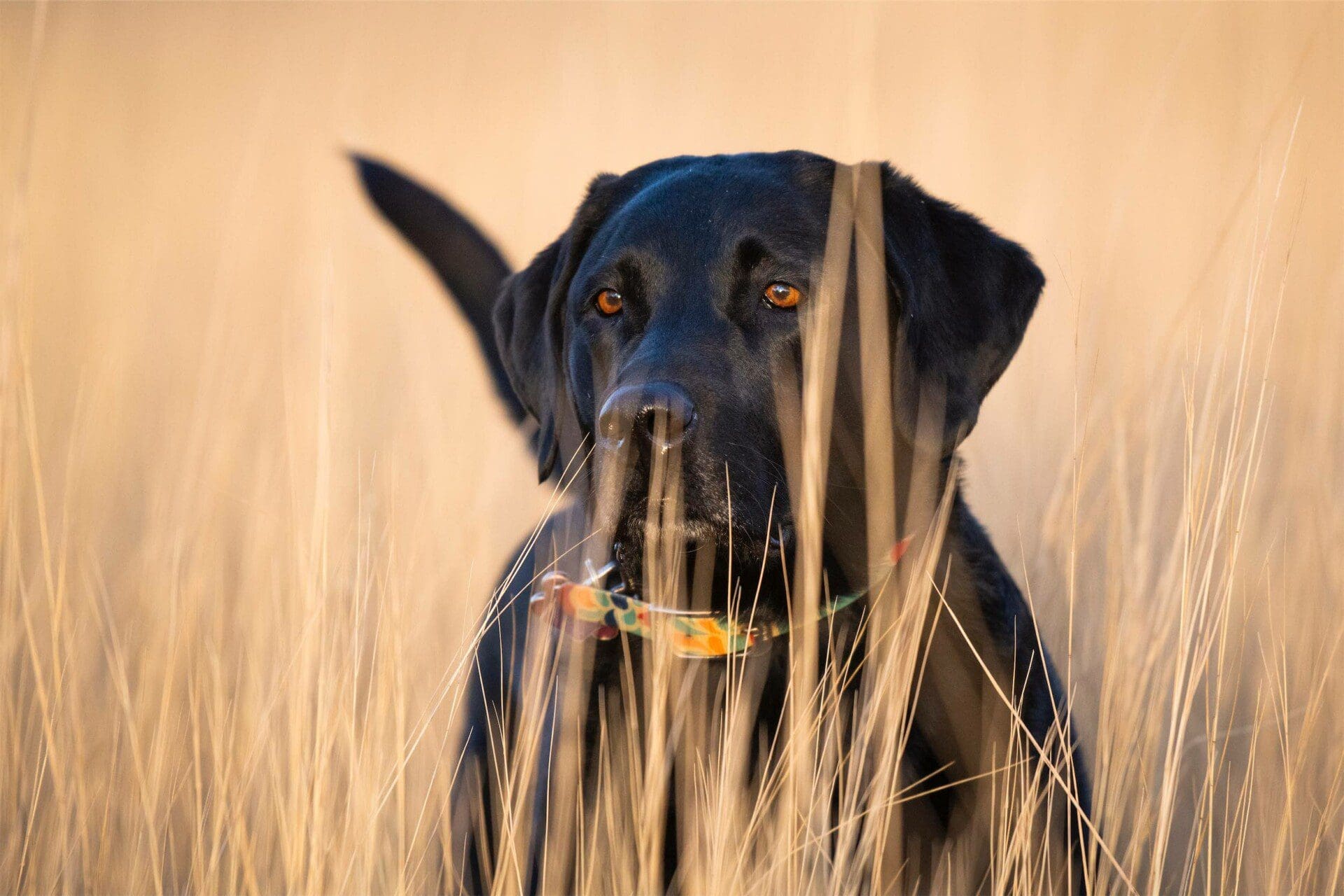
We love to have our beloved Black Lab, Piper, join us for overlanding adventures of all kinds!
Weekend Adventure or Full-Time Overlanding?
When it comes to taking your doggo along for the ride, a weekend-long V.B.A. (vehicle-based adventure) involving some camping and hiking about here in the U.S. is quite a different experience than deciding to drive the entirety of the Pan-American Highway with your pooch on board.
Thankfully, there are lots of similarities when it comes to the basics of taking your dog overlanding. So let’s have a look at what these are:
Food
All dogs need plenty of food along to provide them with the energy they need to have fun and stay warm. Just like us, dogs need more calories to keep their bodies warm in cooler temperatures. Consider the size, age, and activity of your dog, along with the expected weather conditions when determining how much dog food to pack. (Even if you regularly cook for your dog, you’ll need to take these variables into consideration when meal planning.)
Next, if you plan on packing dry kibble and/or canned dog food, make sure you pack these items in containers that will keep the food dry and rodent-free. (We love the Alubox for this!) A clean camp with proper food storage is a lot less likely to attract rodents and wandering animals like raccoons and bears. Take this into consideration when feeding Fido. Be sure to properly store dog food bowls after feeding, and try not to leave kibble or dog food scraps of any kind strewn about camp.
Pro Tip: Don’t go changing your dog’s diet while camping! Dogs generally have easily disturbed digestive systems. If they’re used to eating dry kibble at home and you feed them steak and beans in camp, well, you can probably guess what will happen! Keep their diet consistent to what it is at home and you won’t have these problems!
Finally, just like us, dogs love treats! So be sure to pack along some healthy snacks for your dog, whether on the trail, driving, or just hanging out in camp. They’re sure to love you for it!
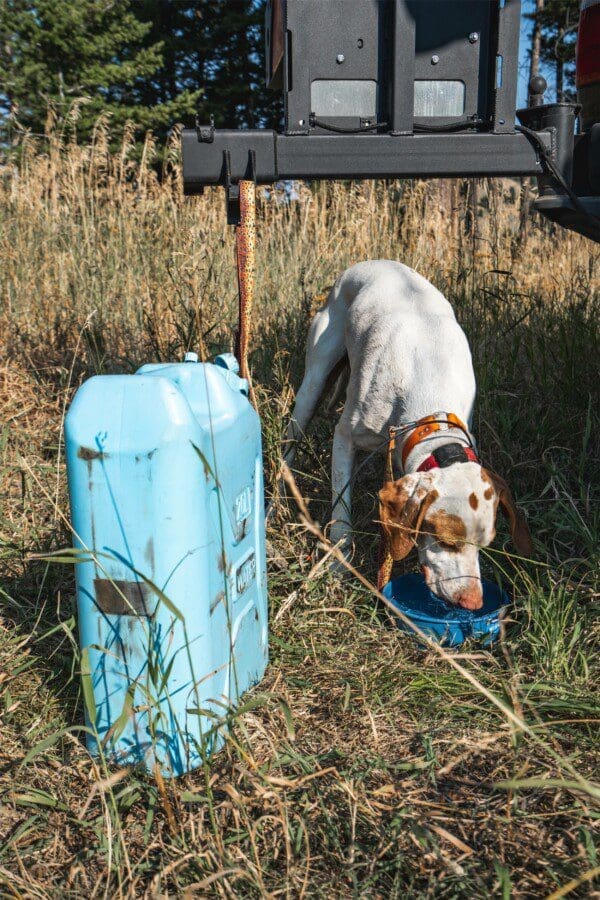
Pack along all of the water you think you’ll need and then some for both you and your pooch.
Water
Just like us, dogs need plenty of clean, FRESH water. As with food planning, consider the type of dog, the amount of activity, and the weather and environment you expect to encounter on your trip. Dogs can go through a lot of water, and you’ll want to ensure you have the supply you need and that it is properly stored.
Pro Tip: Beware of letting your dog drink stagnant water! Stagnant water is what you’ll likely find in old mud puddles and sometimes in small ponds and marshes. It can be toxic to your dog even to the point of requiring veterinary care. Look for fresh springs and/or cold, clean creeks with moving water as a natural source for your dog. Be especially careful around ponds and lakes anytime you see blue-green algae blooms. Water associated with these blooms can be fatal to both dogs and humans, so keep Fido from swimming and drinking in these areas!!
If you’re heading out for a hike, be sure to bring along enough water for you and your dog, that way, if the natural water sources look unsafe, you’ll still have what you need.
Finally, an easy-to-clean, sanitary water bowl of some kind is a must. Make sure it can withstand the rigors of travel, and wash it out occasionally.
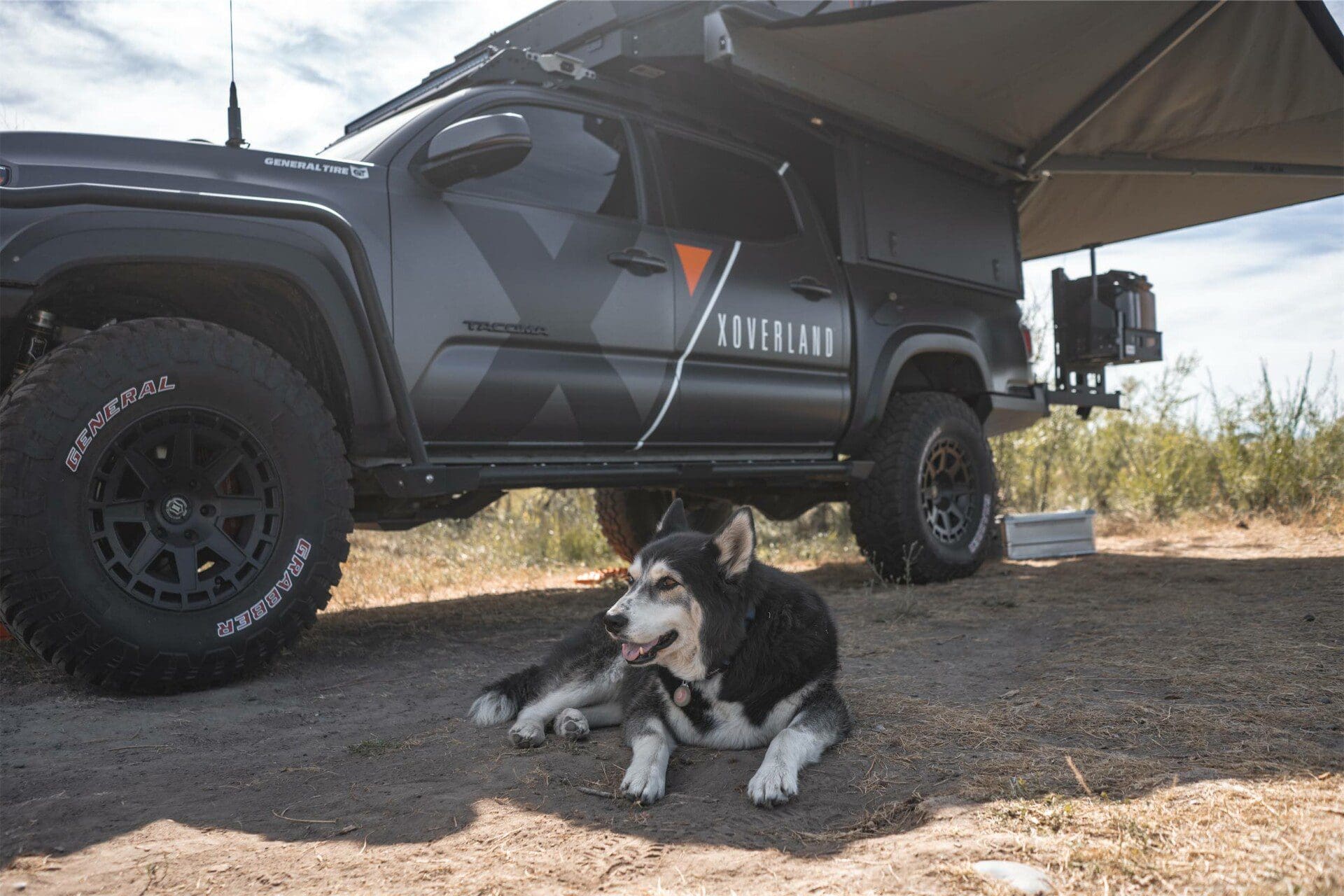
Shade is a must for both you and your dog when the sun’s blazing. Awnings are the perfect solution!
Shelter
When it comes to meeting your dog’s basic needs, after food and water comes shelter. Just like us, right? Consider that when your dog joins you for the adventure, they may be sharing your shelter with you. At night when it gets chilly, in the shade when the afternoon sun is ablaze, or hunkering down in the tent during a rainstorm, Fido will be right there with you.
Of course, this arrangement has pros and cons. While it’s nice to snuggle up with your canine buddy, what happens when he gets muddy and wet or decides to roll in something especially stinky?
To meet your dog’s basic needs and to keep yourself comfortable and not sleep-deprived, you may want a separate place for your pooch to sleep. At a minimum, pack along a weather-resistant dog bed that can withstand the rigors of camp and be easily cleaned. Then, dedicate a specific “place” for your dog to sleep or rest while in your vehicle or in camp.
Pro Tip: Consider buying a well-made crate for your dog and set aside an area in your vehicle for it. Teach your dog how to use it around the house and while out and about before you go on an adventure. A crate provides a safe, secure place for your dog when you really need it and a structure around which you can put a blanket at night so your buddy can stay toasty. Dogs generate a tremendous amount of body heat, so a thermal blanket around a well-fitting crate will insulate your dog well even on very cold nights.
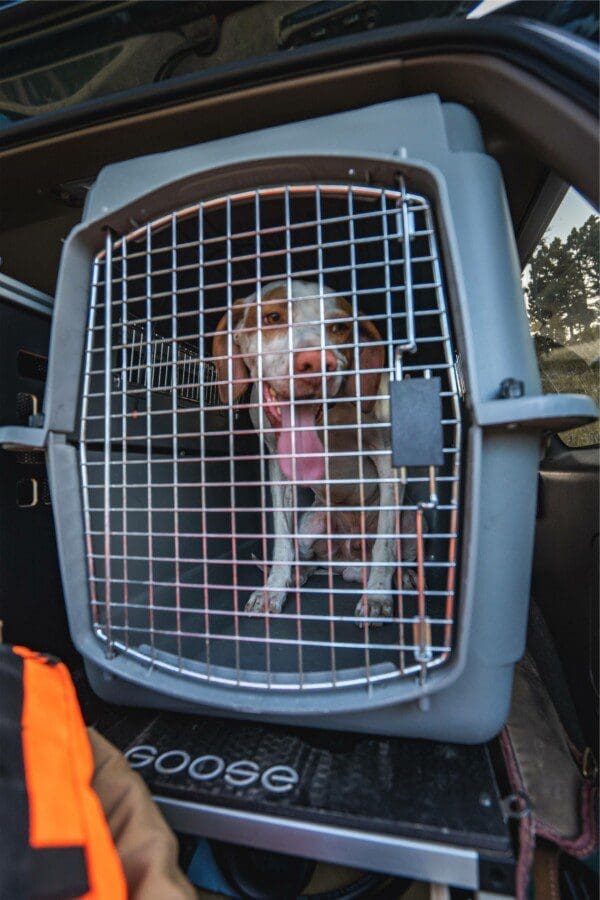
A sturdy, well-fitting crate is very useful to have along when bringing your dog overlanding.
The whole idea is for your dog to feel like she has a safe and secure place to rest and sleep while you’re driving or when you’re in camp. If your dog is attached to a particular dog bed, you can set it out while you’re in camp and they will usually lie there. When it’s time to call it a night, you can bring the bed inside your tent, and your doggo will have his beloved spot on which to rest.
Vaccinations
The big one is your dog’s rabies vaccination. You need to ensure it is current and that you can provide proof of vaccination upon demand. This is especially important if you intend to cross international borders.
Along with a rabies vaccination, it is highly recommended you also have your dog vaccinated for CAV-2 Distemper/Parvo/Adenovirus and Leptospira.
Optional vaccinations include Canine Influenza, Canine Parainfluenza and Bordetella, and Lyme Disease.
The good news is that responsible dog owners will already have most of these vaccines completed and up to date. Just be sure you have documentation along to prove it. Keep in mind that beyond the legalities of vaccination requirements for your dog, having your dog’s vaccinations up-to-date will ensure that he stays healthy while on the road and has protection against potentially fatal diseases he may encounter while adventuring outdoors.
Beyond the Basics
Flea/Tick and Worming
While we’re on the subject of vaccinations and veterinary care, it’s worth remembering to ensure your pooch is protected against fleas, ticks, and worms. Most modern dog worming medication address all three of these areas while protecting your dog from heartworm born of mosquitos.
Again, most responsible dog owners will already have this covered, but we feel it’s worth a reminder. Remember to old adage? He who lies down with dogs gets up with fleas? Who wants that?
Doggie First-Aid Kit
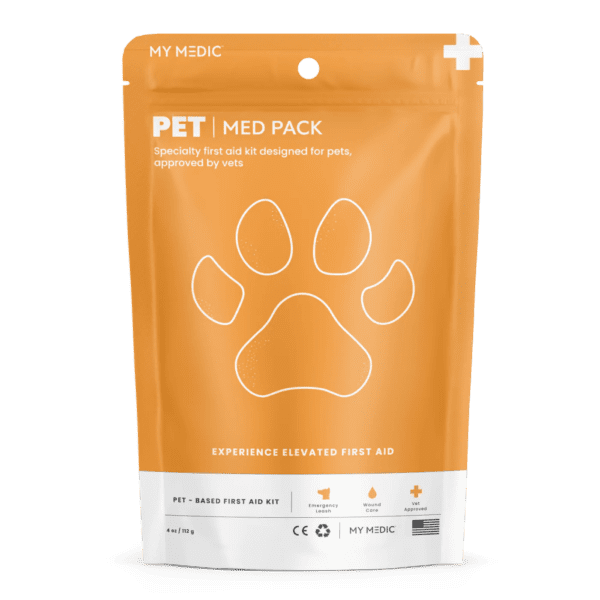
MyMedic has a great solution to keep in your overlanding build!
While some first-aid items will be the same for you and your dog, others are canine-specific. Take some time to put together a dedicated doggie first-aid kit so you’re prepared for whatever Fido encounters on the trail. Essentials include antiseptics for cleaning cuts, scrapes, and wounds, as well as bandages to protect these areas. A dog-friendly, veterinarian-prescribed anti-inflammatory such as Rimadyl for any musculoskeletal injuries that occur and an adequate supply of Benedryl for preventing adverse effects from systemic reactions to plants, allergies, and insect and reptile bites. We also like to have a dedicated doggie thermometer to help monitor for illnesses of all kinds.
Pro Tip: The next time you’re at your vet clinic for your dog’s annual exam, consider taking some time to discuss your doggie first-aid kit with your vet. Especially if they’re are some items you’d like in your kit that can be obtained only with a prescription, your vet can both advise and assist you with obtaining what you need.
Collars, Leashes, and Tie-out Stakes
Begin with a sturdy, well-fitting collar that can withstand the elements and has your dog’s identification on the collar: The dog’s owner’s name and phone number are adequate.
Pro Tip: If you’re going to be taking your dog on lots of adventures, you may want to consider getting her “chipped.” Chipping your dog is a practice available at most veterinary clinics that involves the simple insertion of an electronically generated I.D. for your dog in case he gets lost and found. Most dog shelters will immediately scan a stray dog for an identification chip to help them locate the dog’s rightful owner as soon as possible.
Along with a good sturdy collar, have a couple of well-made leashes along that are suitable for the activities you have in mind for your dog. We say “a couple” because having an extra leash is never a bad thing if they are dogs about.
Finally, a high-quality tie-out stake can be very handy for bringing your pet along. Once you get to your campsite, you can stake out your dog, so she has enough freedom to move around but not so much as to leave camp and find trouble. Having this arrangement can save you some worry about wondering where your dog’s off to while freeing you up to get things done around camp.
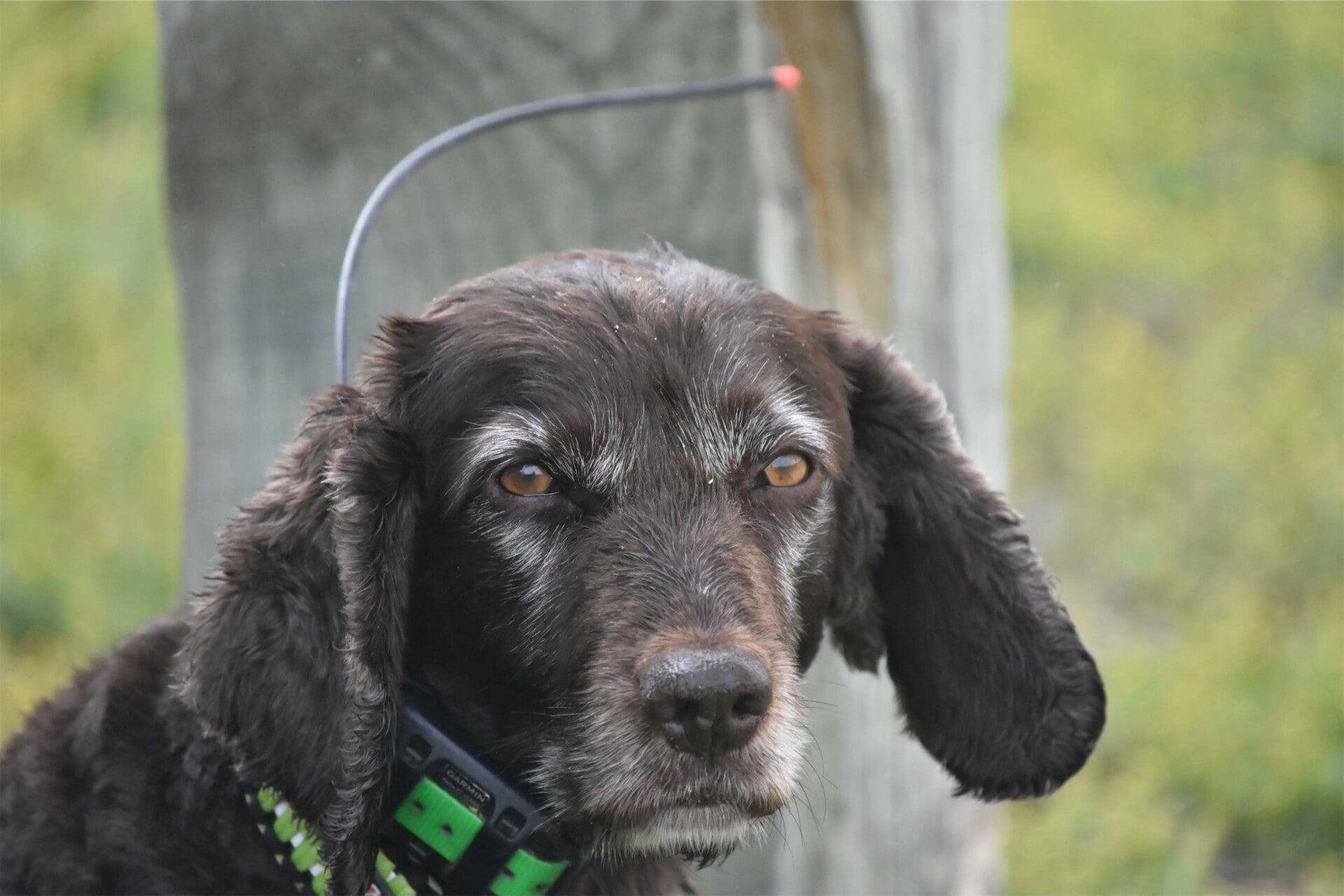
A GPS-based tracking collar can really help you keep tabs on Fido’s whereabouts if he likes to wander.
Our Take on Letting Your Dog Roam vs. Keeping Him Close to Camp
While some dogs naturally stay close to camp and are content to hang out, others desire to frequently wander about, sometimes at great distances.
Here are some thoughts to help you make a good decision regarding your pet:
- Campsites, even primitive campsites in remote locations, are getting more use all the time. Not everyone using these sites buries their poop. Do you really want your dog to bring that back to camp?
- As overlanders, many of the areas we are venturing into are full of wildlife. Some of this wildlife is threatened by a wandering dog; other wildlife will threaten the dog! For example, we live in Montana, where bears, packs of coyotes and wolves, and rattlesnakes are never too far away. Why let your dog get injured or worse by allowing her to wander about unsupervised?
- It is also worth noting that in Montana and many other states where ranching is common and where wildlife is a valued resource, it is legal to shoot any domestic dog deemed to be harassing either domestic livestock and/or wildlife. As responsible dog owners, it is our legal responsibility to keep our pets under control and prevent them from harassing other animals, wild or domestic.
- Finally, if you’re camped in a campground, while some people will welcome a friendly visit from your pet, others most certainly will not. Keep your doggo in your own camp to be respectful and protect the well-being of your dog and other campers.
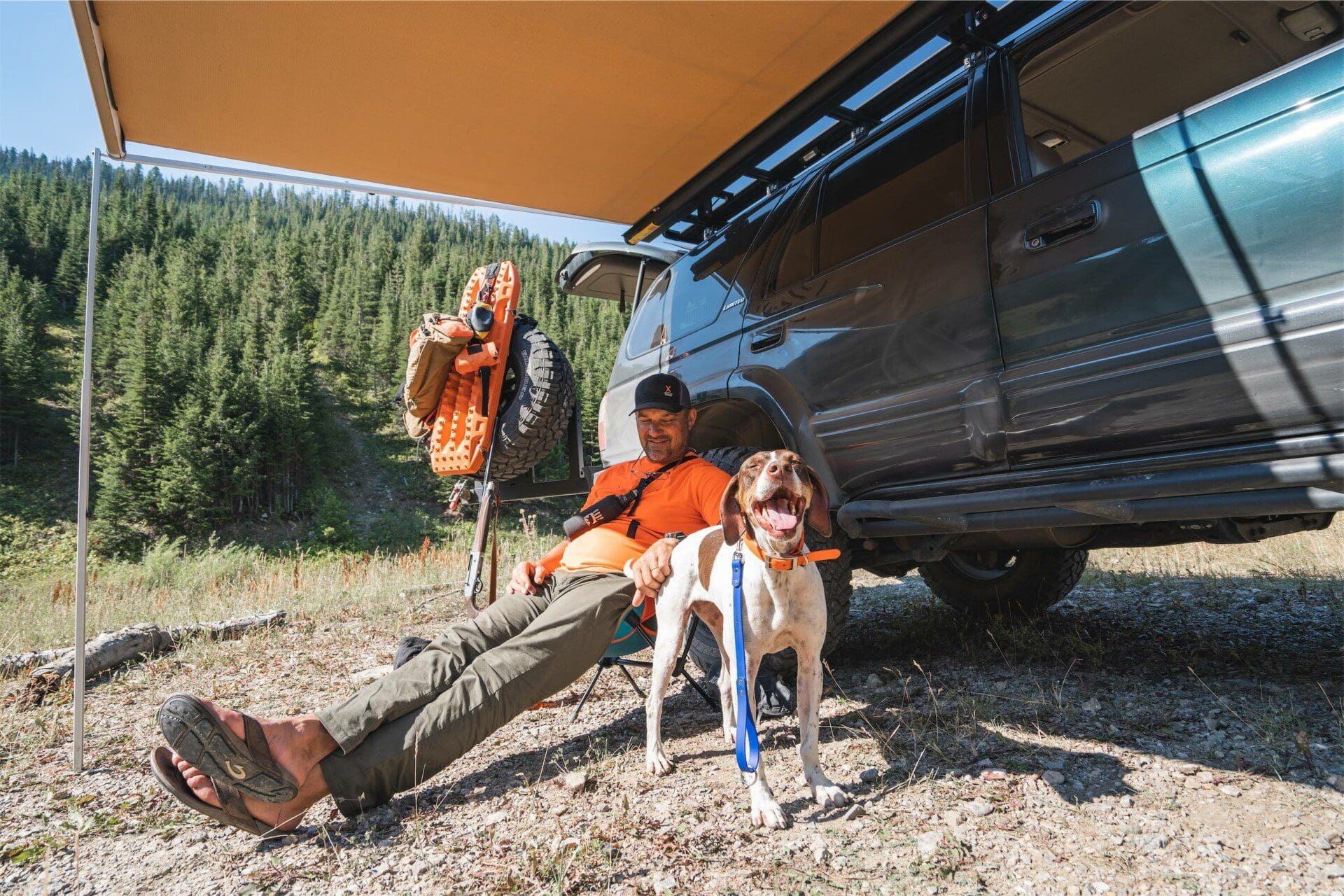
With a well-equipped overland vehicle, there’s lots you can do with your dog in the outdoors, like hunting together!
Other Things to Think About
As outdoor adventuring becomes more popular, pooping along trails and around campsites is becoming more and more of a problem, and this pertains to dogs as well as humans.
There are now many popular areas in which if you “poop it out, you pack it out.” If you’re out and about with dogs on popular trails or around heavily-used campsites, you must clean up and pack out your dog’s poop. Be sure you’re ready to accomplish this task by having doggie poop bags of some kind packed in your kit. There are lots of purpose-built dog poop bags and dispensing devices available to choose from, or you can fashion your own. Just make sure you have something figured out for when nature calls!
Bring a Toy or Two!
Does your dog like to fetch? Does he have a favorite toy or chew toy? Bring them along! Packing a favorite toy or two will help your dog feel at home and give him something to play with for downtime. Chew toys are especially useful as a way to happily occupy your dog while hanging out in camp, and chewing is a healthy activity for dogs, whether at home or in the field!
When NOT to Bring Your Dog
While we’re all about sharing our best advice for how to bring your dog along on your adventures, it is necessary to help you consider when not to bring your dog along in the first place. Fundamentally, there just may be some trips and adventures you’re planning on that are just not a good fit for Fido. Here are some prime examples:
- You may be heading somewhere during a time of year in which the climate and weather are uncomfortable for your dog at best and flat-out dangerous at worst. Extreme heat, cold, and severely stormy weather all can pose big problems.
- You are planning on spending most of your time in National Parks or in other areas where dogs may not be allowed, or the leash laws are so restrictive that you may not be able to enjoy having your dog along. Be sure to check out the legalities concerning dogs where you intend to travel before you get there.
- Maybe the nature of your trip is such that you will be spending so much time driving that there will be little time left to exercise and play with your dog. If a child becomes quickly bored and uninterested in your approach to travel, chances are that a dog will feel the same way.
Be reasonable, do your homework ahead of time, and work on making prudent decisions when you’re planning to include your dog on the adventure. You’ll likely avoid major pitfalls that will be downers for you and Fido.
Daily Exercise!
While overlanding, make time to take yourself and your dog for a daily walk. In fact, having a dog along is a great motivator to get out from behind the wheel and see some country by taking a hike. And remember, an exercised dog is a good dog!
Scents and Smells
Keep your vehicle and camp area smelling good by giving your dog frequent baths and by using pet deodorizers on your dog, the dog bed, and maybe even in your vehicle. This combination works great and will last for days. No more stinky dog odors!
Pro Tip: Dog poop can also be a bear attractant if left on the ground. Make sure to pick up your dog waste in camp!
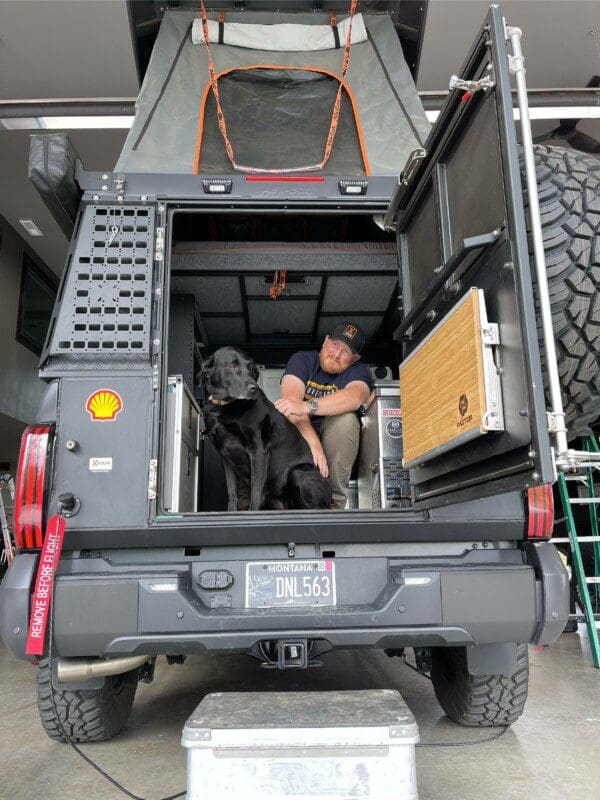
RTTs and Dogs
There are some ingenious approaches people have to get their dogs into and out of their rooftop tents. Seek these out, and go to work on a clever design of your own. (It’s fun!) The important thing to remember is you need to find a way of providing doggie access to your sleeping area that protects your dog from harsh falls to keep her free from injury.
Safety and Security
Having a dog along can help keep you safe. A dog, especially a big one, can be a significant deterrent to anyone intending to cause you harm. Even a little dog can at least alert you to an approaching danger, giving you time to prepare to defend yourself. Think about it: They’re called “Watch Dogs” for a reason!
Be Prepared to Find a Nearby Vet
Before heading into a particular area, research to identify local veterinary clinics appropriate for small animal care. Of course, while on the road, as long as cell service is available, Google is an excellent resource to locate nearby veterinary clinics and read reviews to find the right clinic for your needs. If you have a vet you regularly use at home, see if they offer a virtual visit for remote veterinary care. There are also apps available that will allow for virtual veterinary care 24/7 while traveling or anytime.
Grooming for Border Crossings
If you’re planning on crossing international borders with Fido, make sure you and your doggo look the part of being clean, respectable, healthy travelers. Before arriving at the border, groom yourself and your dog; you’re less likely to have issues.
Leaving Your Dog in Your Vehicle
If you must leave your dog in your vehicle, ensure it is a safe environment. Vehicles left in the sun can quickly be lethal to dogs, even with open windows. Always ensure your dog has adequate shade and ventilation when left in a vehicle, tent, or camper.
Let Your Dog Stick His Head Out the Window Every Now and Then!
We’re mostly saying this one tongue-in-cheek, but what dog doesn’t enjoy sticking its nose into the wind every so often?
Concluding Thoughts
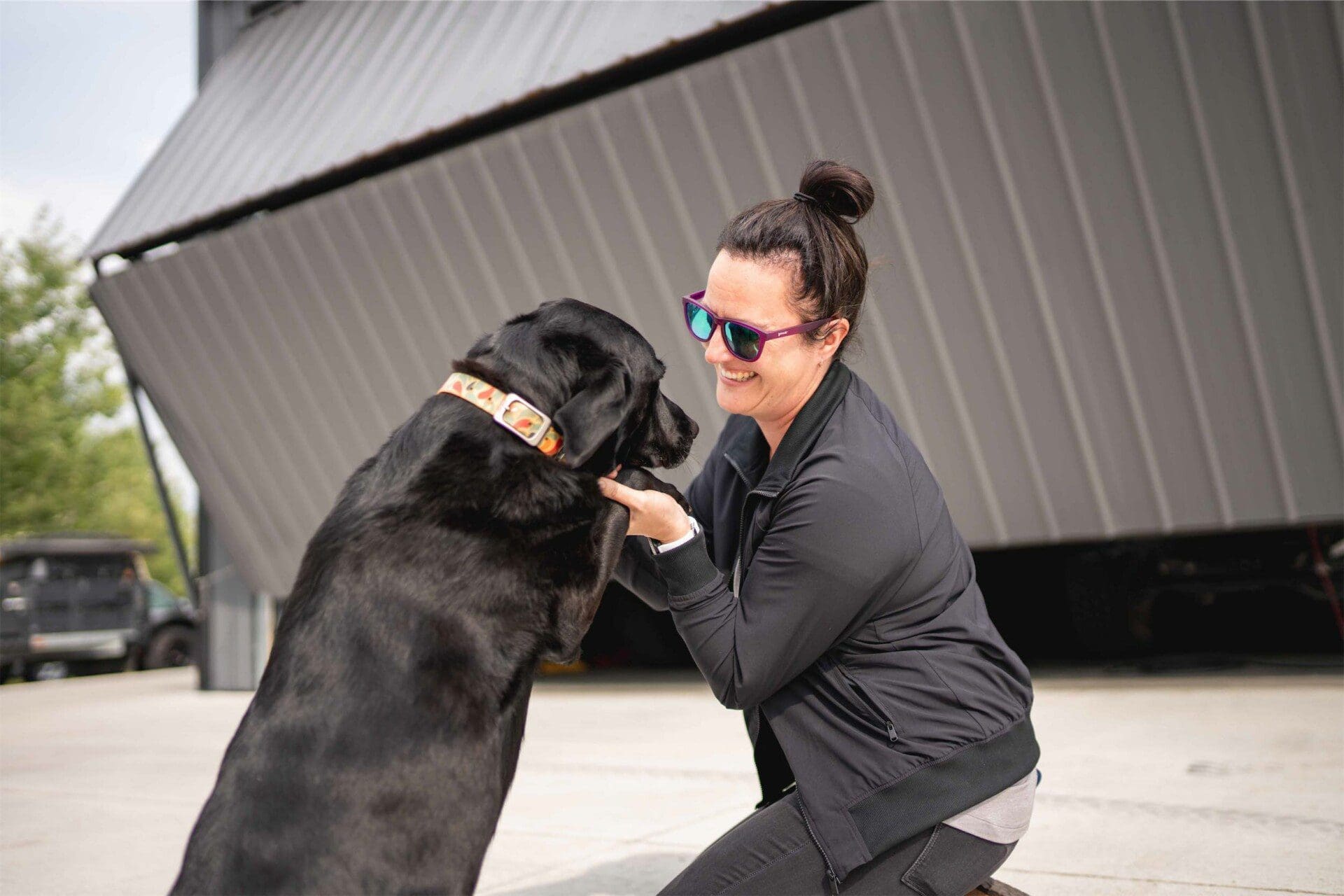
As in all things overlanding, #startsomewhere, and make a plan to take your dog on your next adventure!
Bringing your dog is like anything else in overlanding: You need to #startsomewhere. Our hope is that by reading this blog, we’ll save you from some major pitfalls, and your first outing will be a safe, successful, and happy one for you and your beloved pooch!
Taking dogs along means plenty of new challenges, distractions, messes, and disruptions but also new pleasures: a buddy for companionship, a guardian in camp, and a new source of comic relief and laughs for the adventure.
Just prepare yourself for a dirty rig, some dog hair in your tent, and everything not always going as planned. As overlanders, we’re at least used to that. Right?

